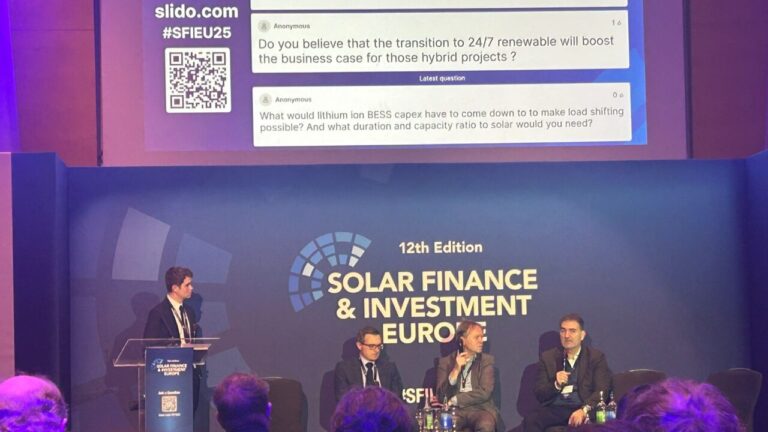The schedule connection process is one of the most important challenges for co-located Solar and Battery Energy Storage System (Bess), said a panel of experts.
On the second day of the Solar Finance and Investment Europe Conference in London, a panel challenged by Ben Fulton, senior consultant at Cleantech Advisory Firm Abricum Group, discussed the challenges of co-location of solar and storage projects, in particular those who choose to add to add bess capacity for an existing solar project retrospective.
Co location of solar and storage is currently a hot topic in the VK, because the first transmission-connected co-located Solar and Storage project of the VK-Het 70MWP Larks Green Project, located near Bristol-in November Last year was connected.
A public poll showed that about 43% of those present viewed an interconnection of the network and allow it to be the biggest barriers for co-locate projects, with which the panel agreed. Simon Wannop, director of Reg Power Management, noted that once was protected, much of the difficulty of the process was avoided.
He said: “Initially it is a consent problem – the landowners agree with it, making the grid agree. As soon as you have all those pieces of paper in place, planning, land rights and the like, you have protected them, and then you can wait ten years until the business case is better. ”
However, the nature of grid connection processes in the UK means that the options for speculative security permits of the schedule connections are always limited; As Wanop noted: “The problem with which the UK is confronted is that Grid does not leave you on capacity, but that is a separate issue”.
The big question in everyone’s spirit is: are standing solar projects not getting economically feasible? Anastasios Christankis, Chief Operating Officer at Queequeg Renewables, notes that it varies considerably per market. He stated: “In the UK, independent solar projects are logical because of the limitations of the grid, but most developers elsewhere look at co-location to maximize the value.”
Co-location and income flows
The most important advantage of co-location is the diversification of income flows. This is in particular the key in markets where in limitation is increasing, and Michiel Adriannse, director of Claritas Investments, noted that he has seen interest in the retrospective co-location as an increasing problem becomes.
He noticed: “Concise wipes a large part of your income – we have parks where restraint affects 25%, and now we are considering finding batteries there”.
In response to a question about the value of adding Bess to a solar project where there was no problem in restriction, Christankis stated that it was often much easier to add bess capacity earlier than later, and noticed: “If you have it Do not do it now, and you try to do it afterwards, you are confronted with problems.
In general, the value of co-location compared to large-scale independent projects is something that the panel corresponded, and according to Adriannse, most banks understand the desire to coacce with solar projects afterwards.
He noticed: “Once you have a problem with a solar park, I notice that most banks are willing to work with you to solve it. Banks are very willing to board with co-location, but on its own rack scale on its own battery projects are more complex. “


